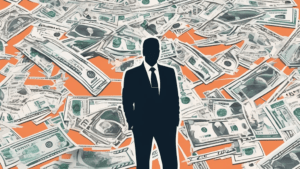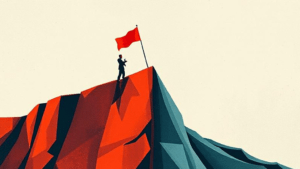
Why Skills-First Leadership Is Replacing the Ivy League Playbook in the C-Suite
The old prestige pyramid—where Ivy League degrees and blue-chip consulting backgrounds paved the way to the CEO seat—is cracking.

September 17, 2021: -On Tuesday, New Zealand’s economy increased at a much faster speed than expected in the second quarter, officials said, reinforcing the view that the central bank will begin to lift interest rates despite a recent outbreak of the coronavirus.
Gross domestic product (GDP) increased 2.8% in the three months to June; Statistics New Zealand said, well ahead of a Reuters poll forecast of a 1.3% surge in growth and the Reserve Bank of New Zealand’s (RBNZ) calculation of 0.7%.
The growth increases follows a drop in unemployment in the second quarter to 4.0% and a surge in annual inflation to 3.3%, above the central bank’s range of 1-3% target.
The New Zealand dollar went up to 0.3% after the data was released, settling at $0.7320.
“We expect the RBNZ to ‘look through’ near-term volatility and reduce monetary stimulus, with a series of 25 basis point hikes beginning from the coming month,” said Mark Smith, Senior Economist at ASB Bank.
Last month, the central bank delayed raising rates after the country was put into a snap COVID-19 lockdown over a new outbreak of the Delta variant of COVID-19 in Auckland but said a hike was on the cards.
The market had priced in a 100% chance of a 25 basis point hike at the next central bank meeting on October 6.
Annual GDP increased 17.4% due to a fragile base as the country was in a complete COVID-19 lockdown in the second quarter in the previous year. A Reuters poll had expected a 16.3% increase.
New Zealand has rebounded strongly from a recession in the previous year, mainly because of its success in eliminating the coronavirus within its borders and opens its domestic economy well again before other advanced nations.
The country had been virus-free for months until an outbreak of the highly infectious Delta strain in August. The biggest city, Auckland, remains in lockdown, but the rest of the country has opened up again.

The old prestige pyramid—where Ivy League degrees and blue-chip consulting backgrounds paved the way to the CEO seat—is cracking.

Loud leaders once ruled the boardroom. Charisma was currency. Big talk drove big valuations.

But the CEOs who make history in downturns aren’t the ones with the deepest cuts

Companies invest millions in leadership development, yet many of their best executives leave within a few years. Why?

The most successful business leaders don’t just identify gaps in the market; they anticipate future needs before anyone else.

With technological advancements, shifting consumer expectations, and global interconnectedness, the role of business leaders

Maushum Basu is a visionary leader who inspires his team with a clear, compelling purpose. Unafraid to take calculated risks, he understands that growth often stems from change and innovation. His deep commitment to both Airia Brands, Inc.

When speaking with Martin Paquette, one thing is immediately apparent: he’s honest. His transparency is refreshing. While many shy away from such vulnerability, Paquette sees it as a force to reckon with. The incredible emotional intelligence speaks to years of looking within—it’s also what allows him to acknowledge his mistakes gracefully and use them as opportunities to innovate.

Marina Charriere, CEO of Star Drug Testing Services, Star Drug Testing Services (Windsor Park), and First Defence Face Masks go hand in hand. Star is a drug and alcohol testing facility, and First D F M is a face mask company.

Lejjy Gafour, CEO, CULT Food Science Corp. Lejjy is a self-taught entrepreneur and experienced company operator who made his start creating opportunities at the young age of 14, and he has been working, leading, and building businesses ever since.

Leave us a message
Subscribe
Fill the form our team will contact you
Advertise with us
Fill the form our team will contact you